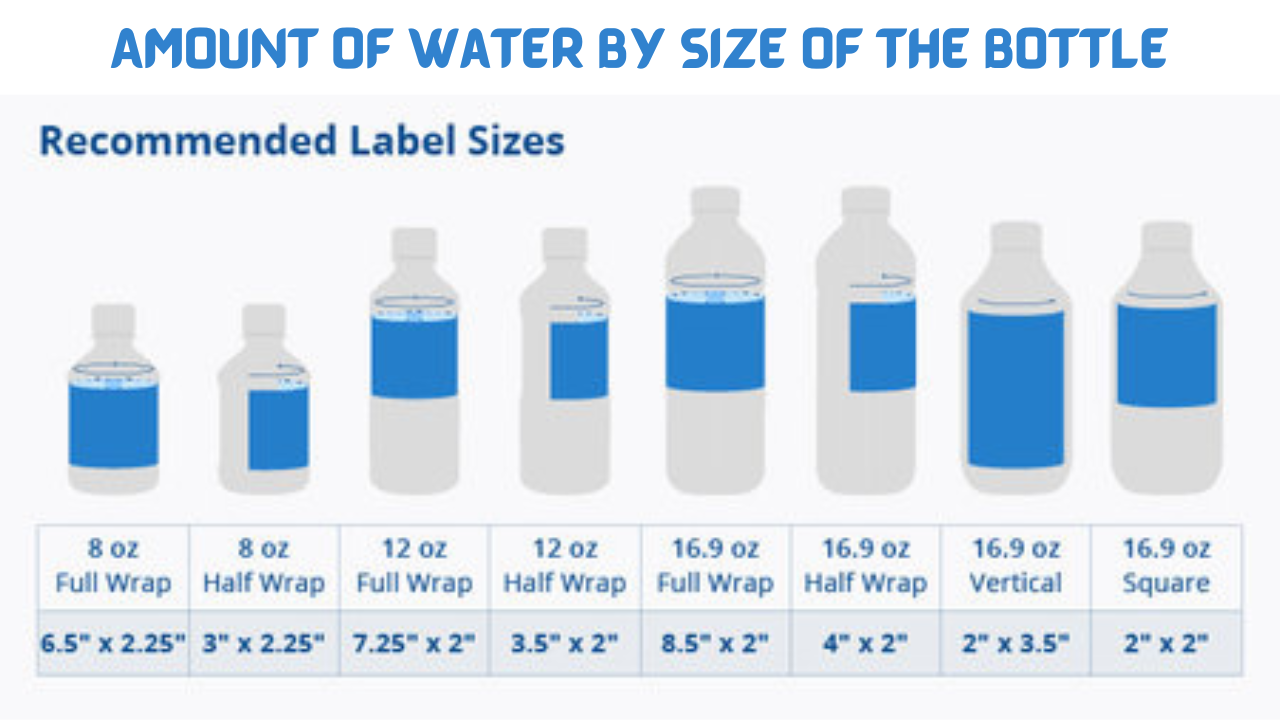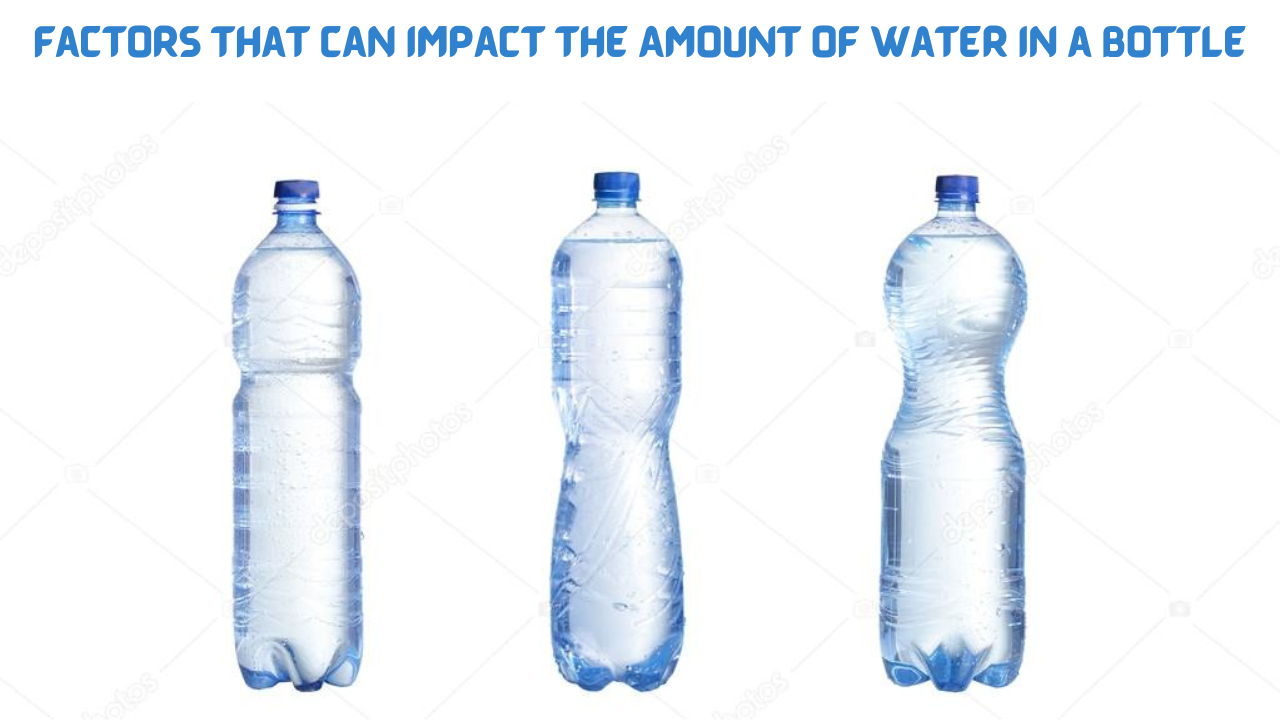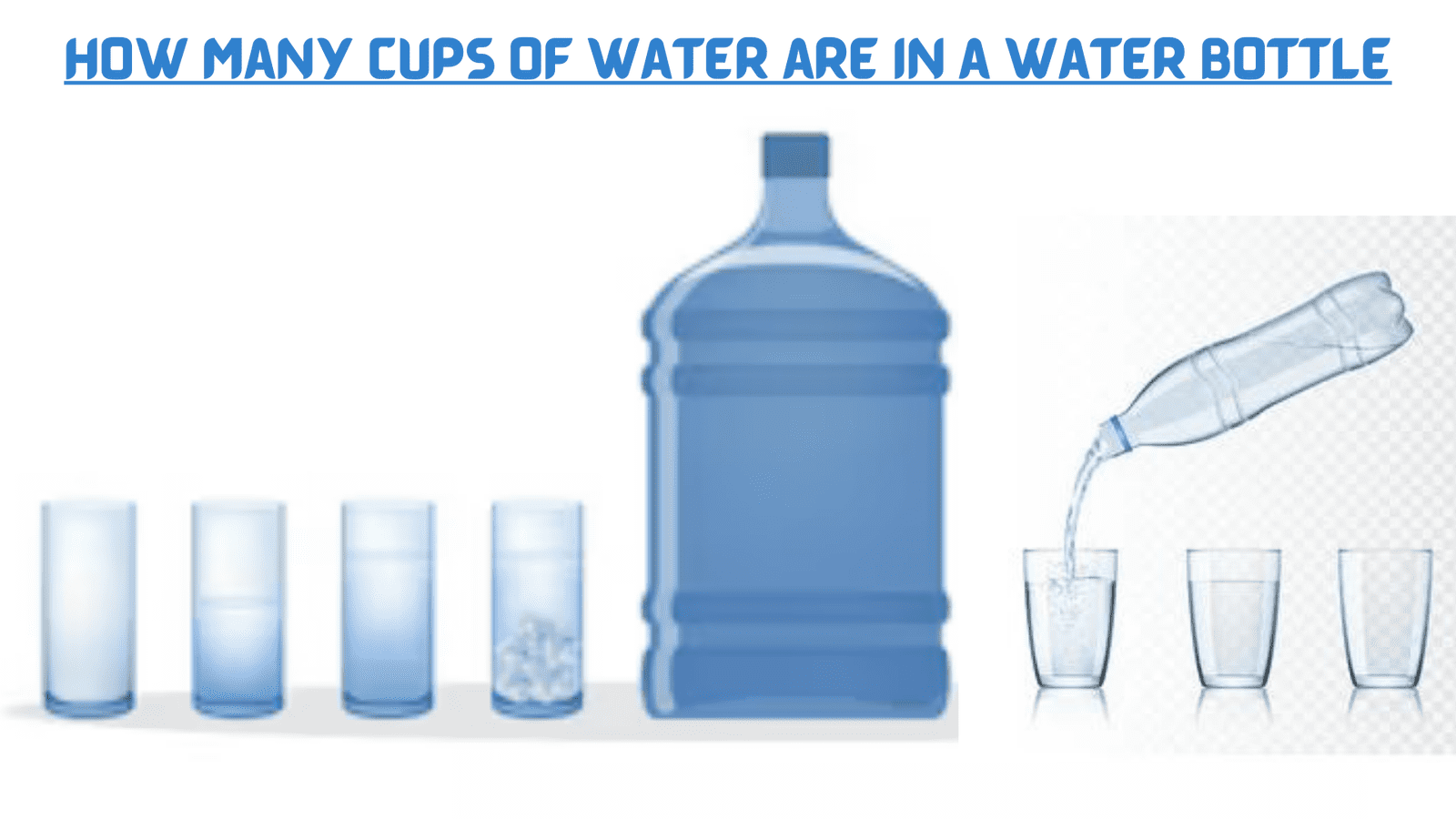What is a Water Bottle?
A water bottle is something that you can put water or other drinks in. You can use a water bottle to drink from when you are thirsty, hungry, or hot. You can also use a water bottle to wash your hands, face, or teeth. Water bottles can be made of different things, like plastic, metal, or glass. They can have different shapes, sizes, and colors. Some water bottles are new and you can buy them from a store. Some water bottles are old and you can fill them with water from a tap or a filter .
how many cups of water are in a water bottle?
The amount of water in a water bottle can be different depending on how big the bottle is and how you measure it. A way to measure how much water is in a water bottle is to look at the words on the bottle. The words usually tell you how much water the bottle can hold in ounces or milliliters. For example, a normal bottle of water that you can buy from a store can hold 16.9 ounces or 500 milliliters of water. Another way to measure how much water is in a water bottle is to use a cup or a scale. You can pour the water from the bottle into the cup or weigh the bottle with and without the water.
What is a Cup of Water?
Before we dive into the comparison, we need to define what a cup of water is. A cup is a standard unit of measurement in the United States, and it is equivalent to 8 fluid ounces. So when we talk about cups of water, we mean 8 fluid ounces of water.
However, not all countries use the same unit of measurement for water. Some countries use liters, milliliters, or gallons instead. To make the comparison easier, we will convert all the units to cups using the following conversion factors:
- 1 liter = 4.226 cups
- 1 milliliter = 0.004226 cups
- 1 gallon = 16 cups
How many cups of water are in a standard water bottle?
A standard water bottle is typically 16.9 fluid ounces, which is equivalent to 2.123 cups of water. So if you drink an entire 16.9 fluid ounce water bottle, you’ve consumed a little over two cups of water.

Amount of Water by Size of the Bottle
The amount of water in a water bottle can change by the size of the bottle. Here are some examples of different sizes of water bottles and how much water they have:
8 Oz. Bottle
An 8-ounce water bottle is a small bottle that has one cup of water. This is the same as a glass of water. An 8-ounce water bottle is easy to carry and fits in most places where you can put a cup. It is good for short trips or when you need a little drink.
16 Oz. Bottle
A 16-ounce water bottle is a medium-sized bottle that has two cups of water. This is the same as a bottle of milk. A 16-ounce water bottle is the most normal size of bottled water that you can buy from a store. It is good for normal trips or when you need a good drink.
24 Oz. Bottle
A 24-ounce water bottle is a big bottle that has three cups of water. This is the same as a bottle of soda. A 24-ounce water bottle is good for long trips or when you need a lot of water. It can also be a water bottle that you can use again and again by filling it with water from a tap or a filter.
32 Oz. Bottle
A 32-ounce water bottle is a very big bottle that has four cups of water. This is the same as a big bottle of milk. A 32-ounce water bottle is good for very long trips or when you need a lot of water. It can also be a water bottle that you can use again and again by filling it with water from a tap or a filter.
Quick Tips:
-
Choose the right size: Consider your needs and activity level when choosing a water bottle size. Small bottles are portable but require frequent refills, while larger bottles hold more water but can be bulky.
-
Rethink disposable bottles: Opt for reusable water bottles to reduce plastic waste and save money. Choose one made from durable, safe materials like BPA-free plastic, stainless steel, or glass.
-
Track your water intake: There are many apps and water bottles with markers to help you monitor your water consumption and ensure you’re staying hydrated.
-
Flavor it up: If plain water seems boring, add slices of fruits, vegetables, or herbs for a natural flavor boost.
-
Clean your bottle regularly: Wash your water bottle thoroughly with soap and water to prevent bacteria growth.
Quote:
“A water bottle is more than just a container for liquid; it’s a symbol of health, hydration, and sustainability. Choose wisely, use it well, and stay hydrated!”

Factors That Can Impact the Amount of Water in a Bottle
The amount of water in a water bottle can be different by some things. Some of these things are:
Temperature and Altitude
The temperature and altitude of where you are can change the amount of water in a water bottle. When it is hot, the water can get bigger and take up more space in the bottle. When it is cold, the water can get smaller and take up less space in the bottle. When you are high up, the air is thin and the water can boil at a lower temperature. When you are low down, the air is thick and the water can boil at a higher temperature. These changes can make the water go away or stay in the bottle.
Size and Type of Container
The size and type of container can also change the amount of water in a water bottle. Different containers have different shapes, things, and holes. These things can make a difference in how much water can fit in the container and how much water can go out of the container. For example, a plastic water bottle can be squeezed or bent, which can change how big the bottle is. A metal water bottle can be hot or cold, which can change how hot the water is. A glass water bottle can be broken or cracked, which can make the water go out of the bottle.
Body Weight and Activity Level
The body weight and activity level of the person can also change the amount of water in a water bottle. Different people need and like different amounts of water to drink. The amount of water that a person needs depends on how much they weigh, how old they are, if they are a boy or a girl, if they are sick or well, and how much they move. The amount of water that a person likes depends on how they feel, what they want, and what they do. For example, a person who weighs more, is older, is a boy, has a fever, or runs a lot may need more water than a person who weighs less, is younger, is a girl, has no fever, or runs less. A person who likes water, is thirsty, or drinks water often may like more water than a person who does not like water, is not thirsty, or drinks water sometimes.
Type of Drink Being Consumed
The type of drink being consumed can also change the amount of water in a water bottle. Different drinks have different amounts of water, calories, sugar, caffeine, and other things. These things can make a difference in how much water is added or taken away from the body. For example, water has all water, no calories, no sugar, no caffeine, and no other things. Water can make the body wet and fill up the water that is lost through sweat, pee, and breath. Other drinks, such as sports drinks, sugary drinks, caffeinated drinks, and alcoholic drinks, have less water, more calories, more sugar, more caffeine, and other things. These drinks can make the body dry and take away the water that is lost through sweat, pee, and breath.
Sports Drinks vs. Sugary Drinks vs. Plain Water
Sports drinks, sugary drinks, and plain water are some of the normal types of drinks that people drink. They have different effects on the amount of water in a water bottle. Here are some ways to compare these drinks:
- Sports drinks are drinks that have water, salt, sugar, and sometimes vitamins and minerals. They are made to give back the water and things that are lost when you move a lot. Sports drinks can help stop you from getting dry, cramps, tired, and sick. But, sports drinks also have calories, sugar, and salt that can be too much if you drink them too much. Sports drinks are good for people who move for more than an hour or in hot and wet places.
- Sugary drinks are drinks that have water, sugar, and sometimes fake tastes and colors. They are also called soft drinks, soda, pop, juice, or energy drinks. They are made to give a sweet taste and a lot of energy. Sugary drinks can help you feel less thirsty, more happy, and more awake. But, sugary drinks also have calories, sugar, and caffeine that can make you gain weight, lose teeth, get diabetes, and other health problems. Sugary drinks are good for people who need a treat or a boost once in a while.
- Plain water is water that has no other things. It is also called tap water, bottled water, or filtered water. It is made to make the body wet and help it work. Plain water can help you control your body heat, blood pressure, blood amount, and digestion. It can also help you get rid of bad things, stop infections, and make your skin better. Plain water has no calories, sugar, caffeine, or other bad things. Plain water is good for people who want to stay healthy and wet.
How Many Cups of Water are in a Water Bottle in Different Countries?
The answer to this question depends on the size of the water bottle. Water bottles come in various shapes and sizes and are made of different materials, such as plastic, glass, or metal. The most common water bottle size is 500 milliliters, which is equivalent to 2.113 cups of water. However, some countries have different standard sizes for their water bottles, such as 330 milliliters, 750 milliliters, or 1 liter.
To compare how many cups of water are in a water bottle in different countries, we will use the data from the Global Bottled Water Industry: Consumption Volume, Share, Growth and Per Capita Intake for 70 Countries report, which provides the consumption volume, share, growth, and per capita intake of bottled water for 70 countries in 2020. We will also use the data from the Water Consumption by Country 2024 report, which provides the annual water withdrawal per capita for 202 countries in 2024.
The table below shows the top 10 countries by bottled water consumption volume in 2020, along with their standard water bottle size, the number of cups of water in their water bottle, and their annual water withdrawal per capita in 2024.
| Country | Consumption Volume (billion liters) | Standard Water Bottle Size (milliliters) | Cups of Water in Water Bottle | Annual Water Withdrawal Per Capita (cubic meters) |
|---|---|---|---|---|
| China | 27.8 | 500 | 2.113 | 959.96 |
| USA | 15 | 500 | 2.113 | 835.92 |
| Mexico | 13.9 | 600 | 2.536 | 830.50 |
| Brazil | 13.5 | 500 | 2.113 | 821.00 |
| Indonesia | 11.8 | 330 | 1.393 | 813.95 |
| India | 10.8 | 500 | 2.113 | 783.59 |
| Germany | 10.6 | 750 | 3.17 | 757.32 |
| France | 7.8 | 500 | 2.113 | 746.60 |
| Italy | 7.6 | 500 | 2.113 | 694.53 |
| Turkey | 7.5 | 500 | 2.113 | 620.69 |
As we can see from the table, the number of cups of water in a water bottle varies slightly depending on the standard water bottle size in each country. However, the difference is not very significant, as most countries use a 500-milliliter water bottle, which contains about 2 cups of water.
We can also see that the annual water withdrawal per capita varies greatly among the countries, ranging from 620.69 cubic meters in Turkey to 959.96 cubic meters in China. This means that some countries use more water than others for various purposes, such as agriculture, industry, or domestic use.
Conclusion
Water bottles are things that you can put water or other drinks in. They have different sizes and types. The amount of water in a water bottle depends on the size of the bottle, how you measure it, and other things. Some of these things are temperature, altitude, container, body weight, activity level, and type of drink. Water bottles can help people drink enough water to meet their daily needs and likes. Water bottles can also help people make less plastic trash and save money by filling them with tap water or filtered water. Water bottles are useful and easy for people who want to stay wet and healthy.
